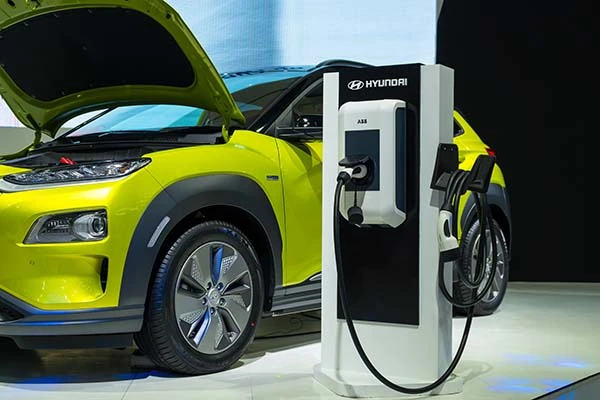Vehicle batteries have a relatively short lifespan, so there may be a chance you’ll have to deal with replacing your old one in the future. However, although the replacement process isn’t challenging, a car battery disposal must be done safely and without any harm done to you, your loved ones, and the environment. So, how to dispose of your old and worn-out accumulator? Our simple guide will provide you with answers to everything you need to know.
What Is a Car Battery?
A car (or automotive) battery is a car part used for starting a motor vehicle. It turns chemical energy into electrical energy and provides an electric current to all of the car’s electrical components, including the motor. Once the motor gets that jolt of electricity, it can start the engine that propels the car. Simply put, without the battery, the vehicle wouldn’t be able to start.
Once the vehicle is started, the battery keeps providing the necessary power, thanks to the alternator that helps with keeping the battery charged. Therefore, it’s also responsible for stabilizing the energy supply necessary for keeping the vehicle running.
Why Is Proper Automotive Battery Disposal Important?
The most common types of automotive batteries are lead-acid, and they differ in voltage depending on the size of the vehicle. However, both acid and lead are hazardous materials that can endanger your health, as well as the environment. An improper discarding of automotive batteries is dangerous – not only can they leak and contaminate the groundwater and soil, but lead poisoning can even cause behavioral and learning problems. That is why you can’t simply throw it away once you replace it.
Throwing away the battery with the rest of your trash isn’t a good option, and you can’t use your standard recycling method, either. Still, the good news is that lead-acid batteries can be recycled, which is one of the best ways of keeping the environment safe. There are many local hazardous waste collection programs you can consider.
Recycling such dangerous hazardous waste brings many benefits. For starters, it ensures the safety of not only humans but also wildlife. Next, reducing the amount of hazardous waste serves to protect the environment and preserve it for future generations. Lastly, it can help conserve natural resources. So, once your car’s accumulator is ready for retirement, make sure you don’t just throw it away carelessly.

What Are the Signs of a Bad Car Battery?
There are many different indicators that it’s time to replace your accumulator, and all of them are enough to cause you driving anxiety once they start showing. Here are some of the most common ones:
- Slow engine crank – if your vehicle takes longer than usual to start and it starts inconsistently, you may have accumulator-related problems,
- Low battery fluid level – vehicle accumulators have some see-through parts, so checking the fluid level should be easy,
- Check engine light appears – this light can signal the accumulator power is weak,
- Bloated battery case – usually happens when the accumulator is overcharged,
- A sulfur (rotten egg) smell – typically occurs when the accumulator is heating up too much or leaks.
Note that accumulators that have three or more years need to be inspected annually – keep that in mind, especially if you wish to buy a used car. Still, although their average lifespan is between three and four years, the length of the accumulator’s life will depend mostly on your driving habits. However, don’t forget that older batteries operate less effectively and are prone to leakage.
Factors That Can Shorten Automotive Battery Life
Besides driving habits, some external factors may also cause accumulator issues. For example, high heat speeds up the electrolyte evaporation and corrosion process. On the other hand, cold can cause much bigger problems than simply having to open a frozen car door – you’ll need almost two times more current than normal if you’re starting the vehicle in cold weather. Vibrations, such as those made during off-road driving, are also your enemy since they can lead to the weakening of internal connections.
Of course, there are also cases where a human error leads to the dead accumulator. Discharging is one of the worst things you can do to your lead-acid battery, and all that it takes is one careless mistake, such as leaving the headlights on.
However, keep in mind that you may have accumulator problems due to the end of its life, but there also may be some underlying issues with your vehicles. Failing alternators, fuses, faulty car alarms, auxiliary lights, bad spark plugs, and so on can all be connected to your accumulator problems.

How to Replace a Car Battery Safely?
If you determine that the problem is, in fact, in the accumulator, it means you should remove your old one and install a new one. Not doing so can cause many other problems, such as a bad fuel pump or even a blown engine.
Luckily, replacing an accumulator is pretty simple – not more complicated than changing a tail light or, for example, replacing the valve steam. At the same time, you’ll need fewer tools and knowledge for it than, for instance, to replace U joints. Here are simples steps on how to do it safely:
Proper Car Battery Disposal – What to Do With Your Old Battery?
Batteries are one of the most recycled consumer products in the States. Therefore, when disposing of dead accumulators, recycling is the best option. It means not only that your old battery won’t be damaging the environment but that its parts will be reused. However, they must be recycled in appropriately equipped facilities.
Almost all municipalities in the States have local hazardous waste centers where you can drop off different kinds of batteries, including vehicle accumulators. It’s a good solution for when you simply wish to get rid of your hazardous waste quickly. Still, note that these used batteries can also help you earn money if you decide to sell them – there is a not-so-small market for these products due to lead’s high value.
You can also decide to take your old accumulator to the common metal recycling establishment in your area. They usually take all kinds of scrap metal and will pay for used batteries – however, it’s not as safe an option as hazardous waste centers. At the same time, you can check if automotive retailers collect these kinds of items. Some of them, such as AutoZone, will provide you with a gift card in exchange for the old accumulator you no longer need.
How Is the Old Accumulator Recycled?
Each part of the old vehicle battery is used to build the new accumulator or helps in different manufacturing fields. Take a look at the table below to learn more about the accumulator recycling process:
| Component | Decomposition process | New use |
| Plastic covers and cases | Crushed into pellets | Used for making new accumulator cases and covers |
| Lead posts, grids, and terminals | Melted down to lead oxide and lead ingots | Used for making new accumulator grids |
| Acid | Converted into sodium sulfate crystals, which are then divided from the used electrolyte | Crystals are used in different manufacturing fields for making textiles, glass, or detergent. |
How to Prolong the Life of Your Accumulator?
As mentioned above, your driving habits can affect the length of your accumulator’s life. At the same time, the city you’re living in can affect your battery’s lifespan. Keep in mind that driving in Los Angeles, for example, or driving in New York City, brings more stress to a vehicle than using it in less congested cities. That being said, there are some things you can do if you wish to prolong the replacement and disposal of the old battery as much as you can – and cut down car expenses simultaneously.
For starters, make sure you don’t go long without starting the vehicle – if possible, take your car for a ride at least once a week. On the other, you should also try to minimize the accumulator usage when the engine is not working.
At the same time, while cleaning the car’s seat belts as well as cleansing the steering wheel and other vehicle parts, make sure you keep both car terminals and an accumulator clean. Finally, it would be good to minimize cold and heat exposure. If you live in a place with more extreme temperatures, think about investing in insulated covers.

Are Electric Car Batteries Recyclable?
Most electric vehicles are powered by lithium-ion batteries (LIBs), and they are not nearly as hazardous as lead-acid ones. However, the most common materials used in these batteries are lithium, nickel, cobalt, graphite, and manganese, which all pose a risk to the environment. Still, less than half of these batteries ever get recycled.
Today, there is still no real sector for recycling these accumulators. The reasons behind it are quite simple – the volume of old electric vehicle batteries is small since electric cars are all newer models, and their batteries last for ten years, on average. On top of that, the demand for these cars is still on the lower side. Studies have shown that out of all the vehicles sold in 2020, only 5% were electric. Still, they are evidently becoming more popular, which means the demand for these batteries will only increase, as well as the need for their recycling.
There is one other difficulty in this recycling process – it’s hard to identify all the components of electric car accumulators since their contents are often a trade secret. Furthermore, the chemical composition of these batteries often evolves over time, so their performance can be increased.
Luckily, many big companies that make some of the best electric cars, such as Volkswagen, Nissan, Renault, and Toyota, have announced their goal of recycling almost all the electric vehicle accumulator components. This will enable them to be reused as energy storage for powering homes and buildings.

When You Need to Dispose of Your Old Battery, Make Sure You Do It Properly
Car accumulators have limited life, and once your is ready to be replaced, you need to know how to do so safely. It’s more than just disconnecting the old one and connecting the new one – you need to make sure the replaced accumulator doesn’t become a safety issue for you, your loved ones, and the ecosystem. Luckily, many different facilities and businesses can help you dispose of the accumulator in the safest way possible – all you have to do is find those that work the best for you.








